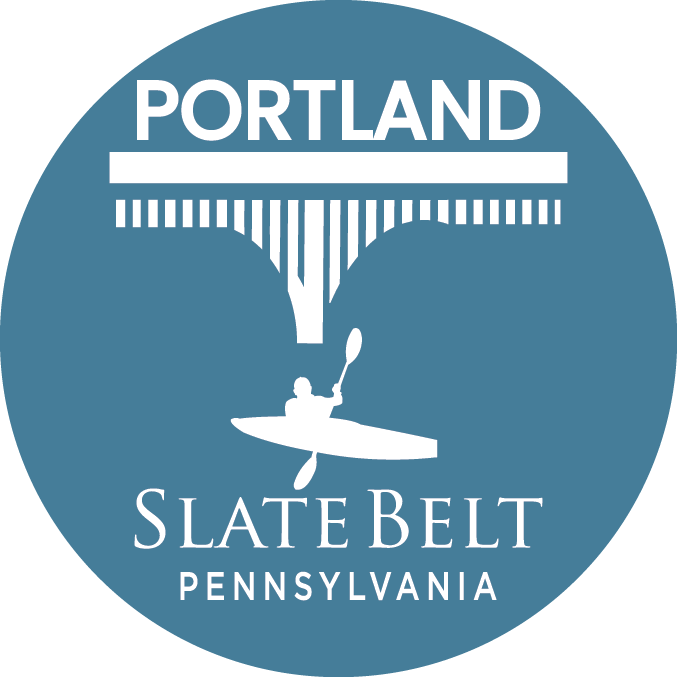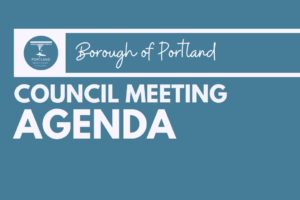HISTORY OF THE CHURCH
Early Methodism – Portland
As recorded in the 1872 Historical Record of the Williamsburg Circuit, Methodism was introduced to this area in the early 1800’s. Preachers from the Stroudsburg Circuit traveled over the mountain to preach in a schoolhouse located a short distance from Dutot’s Gap (Tott’s Gap) at the base of the Blue Mountain about three miles west of the Delaware River. Records indicate that…
“People flocked by the hundreds to crowd the schoolhouse to overflowing and no sooner had success attended the Word than persecution arose. The Trustees of the school held a meeting and passed a resolution forbidding the school’s use by the Methodists, but it was allowed to be used by any other denomination.”
Meetings were also held at Williamsburg, which is now Mount Bethel. Soon they were refused the use of the schoolhouse in Williamsburg also. The schoolhouse was under the control of the Presbyterian trustees. “If it had been possible Methodism would have been exterminated. But these servants of God, like the Apostle Paul-‘none of these things moved them.”
The Methodists continued to hold their meetings in small houses belonging to Mr. Jacob Ott and Mr. Joseph Ink. When these became too small to accommodate the many who attended their meetings, Mr. Ink’s barn was substituted. Still later, his large workshop was used as a meeting house.
In spite of harassment, the Methodists continued to increase in numbers. Thus a proper and more “commodious” place for worship became necessary.
Mr. Joseph Ink, one of the pioneers in the cause, bought a lot, advanced the money to pay for it, and then had to go “security” for its former owner before he could obtain a clear deed. Brother Ink superintended the building of the frame structure, made all contracts and purchases and paid all bills. When the Quarterly Conference audited the accounts, the Society owed Mr. Ink $153.95. This remained unpaid until with the interest it amounted to $200. He then gave the church a clearance of the deed, although he had formerly paid the largest subscription. The building was dedicated in 1835 as the Mount Bethel Chapel. Rev. Jonas Bissey became the preacher in charge. Rev. Bissey later started a Society in Slateford.
“The Revival of 1859” led by Rev. S. G. Hare, resulted in adding 100 persons to the Society in Slateford. Then the Methodists, Baptists and Presbyterians built a “commodious” frame church which was dedicated on November 24, 1860.
Methodist Worship Society – Portland
In the Spring of 1866, the first Methodist Worship Society in Portland was formed by Brother William T. Magee of the Richmond Circuit in the two-room schoolhouse which is the present parsonage. George W. Lamb was the first leader of the class with the following members: Mrs. Louisa Lamb, Mr. John C. Good, Mrs. Mary M. Good, Mr. Samuel A. Flint, Mrs. Amanda Flint and Miss M. Florence Flint. By winter, meetings were being held every two weeks with sermons by the Richmond preacher.
In 1866 the Richmond Circuit was divided and Williamsburg (Mount Bethel), Portland and Slateford formed the new Mount Bethel Circuit. Dutottsburg (Delaware Water Gap) joined the Mount Bethel Circuit for a period of five years. They had formerly been a Society but had broken up about the year 1849 during a spiritual decline which continued until the Spring of ’69. Two of the old Methodists organized a class which grew from 12 to 87 in the short period of 8 weeks. Delaware Water Gap then built their own church. At the Annual Conference of 1871, the Circuit was divided in two. Delaware Water Gap was made a station with their own minister. The remaining Circuit retained its old name, Mount Bethel, and it included Mount Bethel, Portland and Slateford.
Rev. E. L. Martin came to Portland in 1871 as the first resident minister. At that time there were only twenty-two members. The second year of Rev. Martin’s pastorate was characterized by a “powerful revival” and the 22-member congregation was increased to 125. Regular meetings continued in Portland until the increasingly large congregation could no longer be accommodated in the two-room schoolhouse (present day parsonage).
By direction of the Quarterly Conference in 1871, a building committee was appointed consisting of Bros. George W. Lamb, William Bowman, John C. Good, Jessiah Paff and Messrs. Birge Pearson, Peter Frey and P. H. Arm-strong.
Portland Methodist Episcopal Church – 1872
On January 1, 1872, the building committee reported that a “very eligible lot 65 x 220 feet had been purchased (for an unknown amount), the lot paid for and a deed secured.” Soon afterward, the foundation had been partly excavated and subscriptions of over $1,200 secured for building the church.
The cornerstone of the church was laid on July 4, 1872. During the summer and fall the church was enclosed, a frame structure 40 x 60 feet with a spire variously reported as 100 and 110 feet high. The total cost for the church was $7,000. Early the next year a bell was placed in the tower at a cost of $230. In the spring of 1873, the auditorium of the new church was completed and dedicated on June 29. “The pastor, Rev. E. L. Martin, asked on that day for $500, but the congregation generously responded with $600.”
The Methodist Episcopal Church, with its imposing spire, overlooked the thriving settlement called Dill’s Ferry (incorporated as the Borough of Portland in J8J6). The community, at this time the largest in Upper Mt. Bethel Township, derived its business importance from the railroad as a shipping point for great quantities of slate from surrounding quarries. It contained two churches, three hotels, three general stores, one school (present parsonage), one hardware store, one drugstore, four confectionery stores, two millinery stores, one jewelry store, one bakery, a telegraph office, one art gallery, one printing shop, manufacturing establishments for school slates, roofing slate, window sashes, doors and blinds, one iron foundry, a grist mill, a tannery, an extensive lumber business and several lime quarries: The covered bridge spanning the Delaware had been erected in 1869 to replace the ferry.
Early Years of the Young Church
“In 1879 the church still had an indebtedness amounting to more than $3,500. At that time such a heavy debt was most embarrassing. So great was the pressure upon the church that at one time the doors were about to be locked by the sheriff and another denomination was prospecting to get it at much below its real value.”
But three years later, under the leadership of Rev. T. T. Mutchler, who had left a medical practice to enter the ministry, the church was re-dedicated debt-free. It was during this year that it was decided that Portland should have preaching every Sunday morning.
Early 20th Century
The years that followed the turn of the century were marked by periods of spiritual revivals and declines, affecting the membership and finances accordingly. Finances were always of paramount concern and were most heavily felt in the ten years after the completion of the church and again during the depression after 19′?9. Pledges were never sufficient and were constantly having to be supplemented with funds from suppers, raising a mile-of-pennies, bake sales, the sale of quilts, bonnets and aprons made by the Ladies Aid. The rental of the church basement was also an endeavor to make ends meet. The rental was first to the school for $25 .00 a term and later to other denominations for use of the auditorium and still later to the Boy Scouts.
The problems the church had can be seen in the treasurer’s balance at the end of one Conference year of only $7.86; in another year the minister’s salary was lowered from $850. to $750. This necessitated a change in the financial arrangements, and Portland and Delaware Water Gap elected to again.




